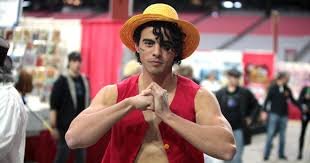
curling shoes
What Are Curling Shoes?
Curling shoes are specialized footwear designed specifically for the sport of curling. Unlike regular athletic shoes, curling shoes have unique soles made to help players slide on ice while delivering the stone or maintain grip while sweeping.
Each pair consists of two different soles:
- A slider sole, which helps the player glide across the ice
- A gripper sole, which provides traction for balance and movement
The shoes are essential to playing safely and competitively, and choosing the right pair can drastically improve performance on the ice.
Whether you’re a beginner just learning the ropes or an experienced curler upgrading your gear, investing in quality curling shoes is a must.
Why Can’t You Use Regular Shoes in Curling?
Curling is played on a meticulously maintained sheet of pebbled ice. Standard shoes:
- Lack proper grip
- Can damage the ice surface
- Offer no sliding capability
- Increase the risk of injury
Proper curling footwear gives players the ability to:
- Slide smoothly when delivering a stone
- Maintain stability during sweeping
- Avoid slipping unexpectedly
Many clubs even require dedicated curling shoes or at least a gripper and slip-on slider to protect the ice and players alike.
To understand curling basics, visit the World Curling Federation
Anatomy of Curling Shoes
Understanding the parts of a curling shoe helps when choosing a pair.
1. Slider Shoe (Usually on the Non-Dominant Foot)
This shoe features a Teflon or stainless steel sole that allows the curler to glide across the ice during delivery.
- Teflon: Most common material, comes in varying thicknesses (1/16″ to 1/4″)—thicker = faster slide
- Steel sliders: More expensive, extremely fast, often used by professionals
- Left or right-footed? Right-handed curlers slide with the left foot, and vice versa
2. Gripper Shoe (Usually on the Dominant Foot)
This shoe has a rubber sole that grips the ice and provides traction. It’s used for pushing off, sweeping, and general walking on the ice.
- Gripper soles often wear out first and can be replaced
- Some shoes include an additional toe cap for durability
3. Toe Coating
Many curling shoes have a toe-drag coating to reduce wear during delivery, especially among players who drag their back toe.
4. Upper Construction
Like other sports shoes, curling shoes can be:
- Leather: Durable, warmer, traditional
- Synthetic mesh or microfiber: Lightweight, breathable, modern
Fit is crucial—you want snug but comfortable shoes that support balance and mobility.
Types of Curling Shoes
1. Beginner Shoes
Often have removable sliders that strap over regular sneakers or come with built-in low-speed sliders.
Pros:
- Budget-friendly
- Great for learning fundamentals
- May convert to casual shoes with slider removed
Cons:
- Limited performance
- Slower slide
- Not ideal for competitive play
2. Intermediate Shoes
Come with fixed Teflon sliders, better grip, and higher-quality materials.
Pros:
- Balanced performance
- Moderate sliding speed (3/32″ to 5/32″ sliders)
- Ideal for regular club curlers
3. Advanced/Competitive Shoes
Top-tier shoes with customizable soles, high-density Teflon or stainless-steel sliders, and professional fit.
Pros:
- Very fast and responsive
- Enhanced durability
- Precision-built for competition
Cons:
- Expensive ($200–$400+)
- Steeper learning curve for faster sliders
Popular brands include Goldline Curling, BalancePlus, and Asham.
Choosing the Right Curling Shoes: Key Considerations
🧊 1. Skill Level
- Beginners: Choose comfort and stability with lower-speed sliders
- Intermediate: Upgrade to a fixed-slider shoe with decent glide
- Advanced: Invest in professional-grade soles and custom fit
🦶 2. Slider Thickness
Slider speed is affected by thickness:
- 1/16″ – Very slow, for absolute beginners
- 3/32″ – Moderate
- 5/32″ – Fast
- 1/4″ – Very fast, for high-level players
👣 3. Footedness (Left or Right-Handed)
- Right-handed: Slider on left foot, gripper on right
- Left-handed: Slider on right foot, gripper on left
Some shoes are ambidextrous and can be customized accordingly.
👟 4. Fit and Comfort
Always try curling shoes on with the socks you’ll wear on the ice. Look for:
- Secure heel and ankle support
- Toe space (avoid cramped toe box)
- Arch support for long sweeping sessions
Some high-end shoes offer heat-molding or removable insoles for a custom fit.
❄️ 5. Temperature and Insulation
If you play in very cold rinks, look for shoes with:
- Thermal lining
- Water-resistant uppers
- Removable insoles to fit foot warmers
Caring for Your Curling Shoes
To extend the life of your curling shoes:
- Use gripper covers (also called gripper pads) when off the ice
- Dry them completely after each game
- Clean soles with a dry brush—avoid soap or water on Teflon
- Store in a breathable bag
- Replace gripper soles once they begin to wear down
Cost of Curling Shoes
Here’s a general pricing breakdown:
| Type | Price Range |
|---|---|
| Entry-level | $50 – $100 |
| Mid-tier | $120 – $180 |
| Competitive | $200 – $400+ |
If you’re just starting, some clubs offer rental shoes or basic gear included in league fees.
Alternatives: Slip-On Sliders
For beginners or casual players, slip-on sliders are a cost-effective way to simulate curling shoes. They attach to regular shoes and provide:
- Basic sliding motion
- Affordable introduction to curling
- Compatibility with gym shoes or boots
However, they lack the precision and balance of true curling footwear and are not allowed in some leagues.
Curling Shoes for Kids and Youth Players
Many brands now offer youth-sized curling shoes with:
- Smaller footbeds
- Softer soles
- Lightweight uppers
These shoes are built to help young players learn proper technique without the risk of sliding too fast.
Brands like Goldline and Olson carry youth models starting at around $80.
Where to Buy Curling Shoes
Top online stores and curling pro shops include:
- Goldline Curling –
- CurlingZone Store
- Local curling clubs with pro shops
- BalancePlus, Asham Curling, Olson Curling
Tip: Try shoes in-store or ask about return policies before buying online.






